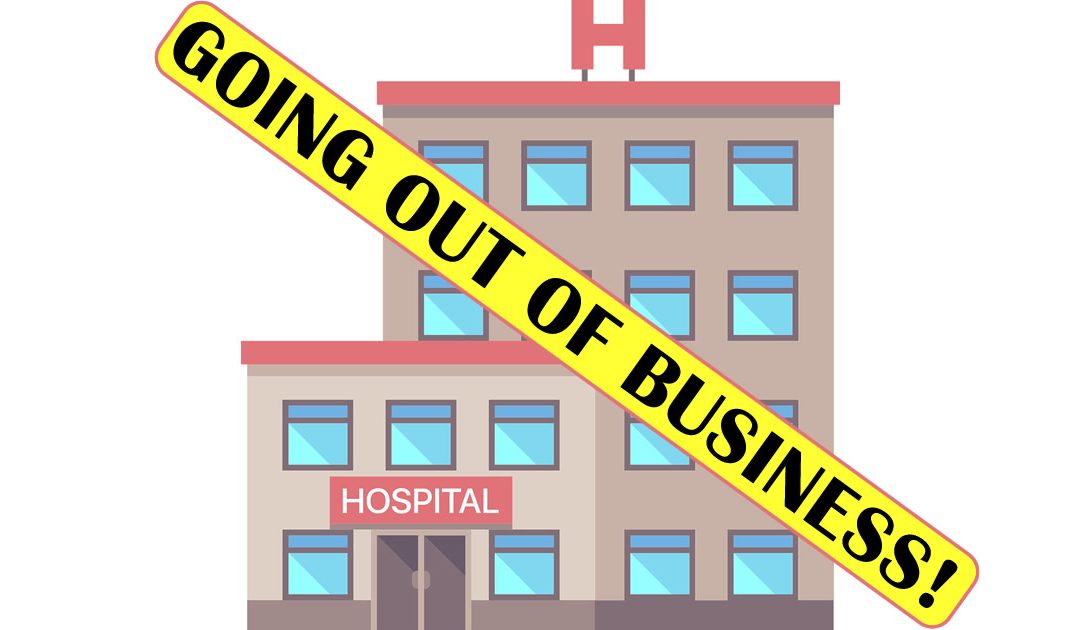The COVID-19 pandemic has taken a huge financial toll on America’s hospitals. According to a report from Strata Decision Technology, they will have lost an average $2,800 per COVID case, with many losing $8,000 to $10,000. Because of this, even a hospital that may have been jam-packed with COVID and other acutely ill patients will lose money. Why? There are two primary causes, both relating to Medicare’s reimbursement policies dating from the last century.
What is driving hospital COVID losses?
The first deficit driver is that Medicare pay only 42% of private health plan rates at a time when almost half of all COVID patients have been covered by the government program. Strata has recommended that Medicare increase its rates by 35% for COVID treatments to help offset these losses. Medicare underpayment is a big and growing problem that won’t change as long as Medicare and Medicaid (which pays only 30% of commercial rates) continue to force private payers to heavily subsidize their otherwise unsustainable programs.
The second and larger cause of hospital COVID losses results from private insurers that now mimic Medicare’s arbitrary method of setting the relative reimbursement value of each hospital service by allocating much higher values to surgical procedures like knee replacements than to medical treatments for acutely ill non-surgical patients—like COVID victims.
In normal times, the only way for most hospitals to be profitable is to recruit enough privately insured elective surgeries to offset not only its losses from Medicare & Medicaid but also those from its privately insured non-surgical services. But during the COVID pandemic, hospitals have been forced to stop treating the profitable elective cases, both to prevent contagion and to shift resources to treat an expected surge of pandemic patients. As a result, while the crisis has lasted, virtually every single hospital patient has been a money loser for its institution. And as you’ve likely heard, the only thing keeping many hospitals from shutting their doors is a major infusion of temporary government money.
There is a better way
But what if hospitals were allowed to set their own prices, at least for private payers, by assigning higher weights—and prices—to medical cases like COVID while balancing those with lower rates for the surgical ones? That way, every private patient could be adequately profitable regardless of service mix. Then, to prevent hospitals from abusing their newfound pricing power, consumers would be empowered always to choose based on the readily available answers to two simple questions:
- Who are all the highest-quality, most appropriate medical providers for my needs?
- Of those, which ones are cheapest?
Hospitals would then be free to set their own market rates for private payers, but consumers—assisted by their doctors—would now be able to choose their providers based on both quality and affordable after-insurance prices. This should sound familiar, since it’s the same way we buy virtually everything else in our consumer-dominated market economy. The net effect of these changes would be far more efficient, lower-priced hospitals (and doctors) with the ability to remain reasonably profitable, regardless of patient mix. Providers that are especially efficient may even be able to lose less money on their Medicare and Medicaid patients.
There is more you can learn
This pricing scenario is precisely what I have proposed as a component of The Pellucid Medical System described in my book, “How Jeff Bezos Can Fix Health Care: Leading the Transparency Revolution.” I know what you’re thinking. How can we expect desperately ill COVID and other patients to stop and shop by quality and price before heading to the nearest emergency room? And why would such patients even care about price, since the total cost of their treatment will quickly exhaust their health plan deductibles and out-of-pocket spending requirements, leaving insurers to pay 100% of the rest without regard to cost? Alas, these and similar questions—while eminently answerable—require explanations longer than a single blog post can tolerate. If you’re in a hurry, you’ll find them in my book—a short, easy, anger-inducing, revelatory, and occasionally amusing read. If not, watch this space.

